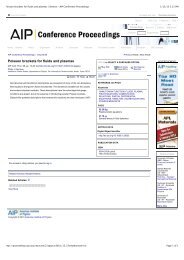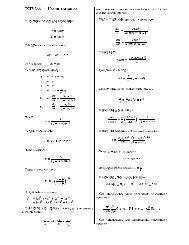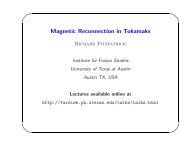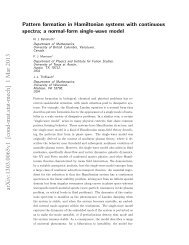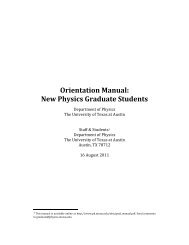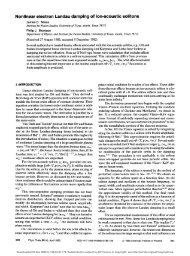Magnetic Fields and Magnetic Diagnostics for Tokamak Plasmas
Magnetic Fields and Magnetic Diagnostics for Tokamak Plasmas
Magnetic Fields and Magnetic Diagnostics for Tokamak Plasmas
Create successful ePaper yourself
Turn your PDF publications into a flip-book with our unique Google optimized e-Paper software.
<strong>Magnetic</strong> fields <strong>and</strong> tokamak plasmas<br />
Alan Wootton<br />
where q est,i is the value expected <strong>for</strong> q i when Equation 15.1 holds. q est<br />
0 ,i is associated with ψ o ,<br />
<strong>and</strong> the known Q ij is associated with χ j . Then the usual least squares approach will determine the<br />
coefficients c j to minimize the function<br />
M<br />
( q i<br />
− q est ,i ) 2<br />
∑ 16.3<br />
i =1<br />
σ i<br />
2<br />
With σ i the st<strong>and</strong>ard error of the i th measurement. This procedure may not be stable, in which<br />
case some numerical damping is added<br />
One technique which avoids the iterations necessary to match the measured <strong>and</strong> predicted field<br />
components is as follows. From the measured fields construct the multipole moments Y m using<br />
the techniques outlined in sections 9 <strong>and</strong> 10. Then m toroidal filaments with current (I p /m) can<br />
be positioned to give the same moments Y m as those measured. Because we have analytic <strong>for</strong>ms<br />
<strong>for</strong> the Y m produced by discrete current filaments (the integral Y m = ∫j φ f m dS φ only takes a finite<br />
value at the filament location) we can derive analytic expressions <strong>for</strong> the filament positions in<br />
terms of the measured Y m 's, thus avoiding the need <strong>for</strong> the iterative procedure. Just as discussed<br />
above, we then use toroidal filaments with known currents <strong>for</strong> external windings, the m filaments<br />
<strong>for</strong> the plasma, <strong>and</strong> plot the flux contours immediately. Solutions up to the plasma boundary are<br />
as exact as our set of moments allows. I am not sure how unique the solution is, or to what extent<br />
I should consider taking more than m filaments. We have still to ask if our solution is unique:<br />
that is, do the m moments uniquely specify the fields on the contour l<br />
An example of such a procedure is shown in Figure 16.1a. Figure 16.1b shows a full<br />
equilibrium reconstruction with j φ (r) iterated until a good fit between measured <strong>and</strong> computed<br />
moments was obtained. Clearly the 3 filament approximation, with the filaments chosen to give<br />
the measured moments Y 1 ,Y 2 <strong>and</strong> Y 3 , gives a good description of the outer surface.<br />
In principle we should be able to extend the "moments with filaments" method of finding the<br />
plasma shape to the use of an analytic representation <strong>for</strong> the current density. Indeed, we did this<br />
in section 11 to find a relationship between the second moment Y 2 <strong>and</strong> ellipticity. However,<br />
there we made an arbitrary choice that the current density be flat. In fact we should specify that j φ<br />
satisfy the Grad Shafranov equation: this problem is considerably more complicated. However, if<br />
solved, we should be able to obtain analytic relationships between the measured moments <strong>and</strong> the<br />
plasma shape. We would still have to parameterize the <strong>for</strong>m <strong>for</strong> j φ : this would be restricted by,<br />
<strong>for</strong> example, a knowledge of the ratio of q on axis to q at the edge.<br />
116



